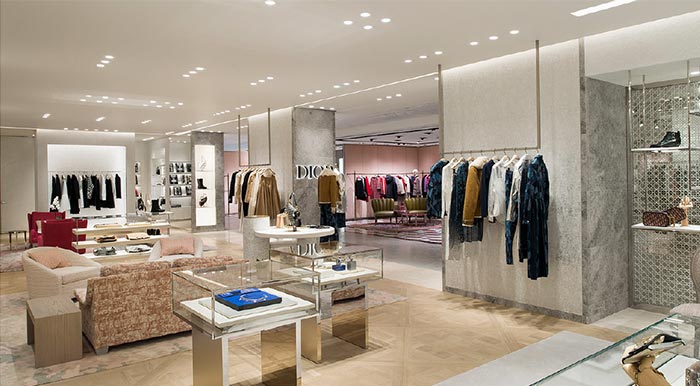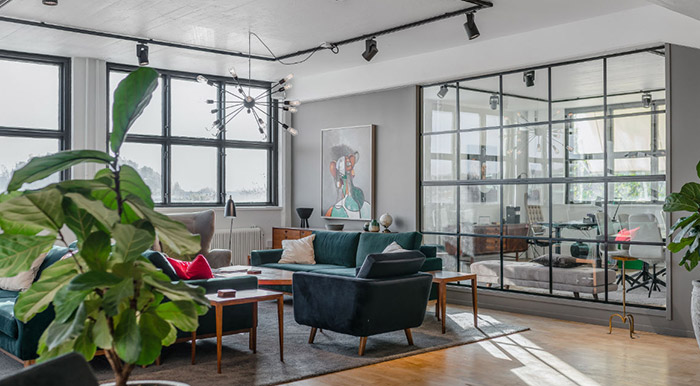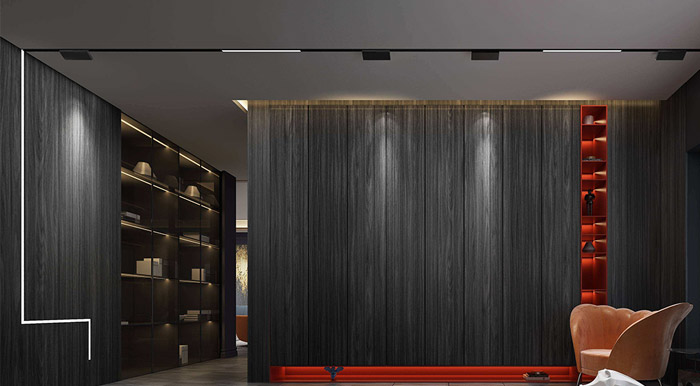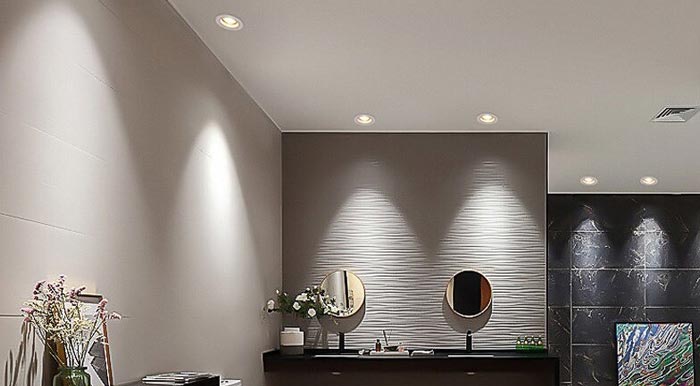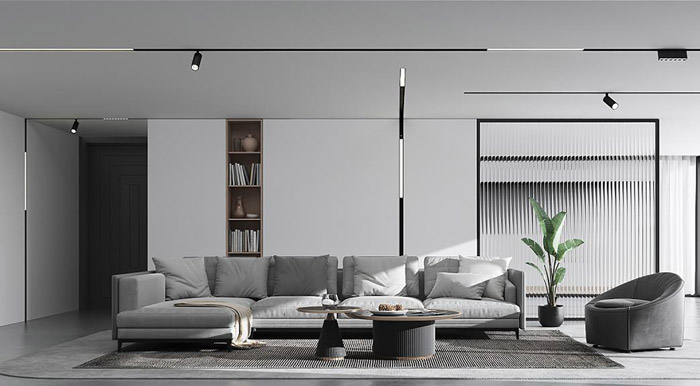What is UGR?
With an increasing awareness of the effects poor lighting can have on a working environment, there has been an upsurge in the demand for UGR compliant light fittings. Therefore, it is important for lighting designer and end users alike to understand when a UGR fitting is required and what it does.
UGR (Unified Glare Rating) is a metric that is used to calculate level of glare in certain applications. Standards have been set for specific working environments to ensure the UGR is at the correct level for the room and doesn’t interfere with general productivity. When a fitting states ‘UGR Compliant’ this doesn’t necessarily mean it meets all the criteria for particular applications. To fully understand UGR you must first understand the following contributing factors.
What is glare?
Glare is a visual sensation that occurs when two competing light sources are present simultaneously in a person’s eye line, for instance, the headlights of oncoming vehicles can hinder your ability to see the road ahead when driving at night. A similar situation can occur in an office environment, when the visibility of a computer screen is hindered by glare because of poorly designed lighting or a badly planned lighting scheme. However, with a professional lighting design this situation that can be avoided as glare is a quantifiable phenomenon, i.e. it can be measured, and its values can be utilised to predict levels of glare in a lighting scheme before any installation is considered.
Glare can be experienced in two different ways: directly and indirectly. Direct glare is caused by an immediate light source such as looking at the sun, whereas indirect glare is caused by a reflection or contrast in lighting. By differentiating which type of glare is apparent, you may decide to optimise productivity by rearranging the desk layout to avoid glare on computer screens from the windows. Whether it is experienced directly or indirectly glare influences the body which can result in fatigue, eye strain and even migraines. These effects can be measured in two ways:
- Disability glare: This is defined as a situation where vision can be impaired, preventing you from seeing an object or completing an activity, for instance looking at a computer with the sun shining on it makes it particularly difficult to see.
- Discomfort glare: This is used to describe times where excessive luminance results in an automatic need to look away and a feeling of discomfort.
The main type of glare that is experienced in the office is discomfort glare, usually caused by an overbearing back light around a computer screen or a strong overhead light. By adjusting the level of glare that is emitted by these fittings to a more comfortable level for the eye, an optimum working environment can be achieved.
How do our lighting products achieve good UGR
How is glare measured?
The photometric data that is provided with a luminaire will contain a table of UGR values that relate to different applications the product may be used in. These figures specify the amount of glare generated by the luminaire in relation to the size and surface reflectance values of a given room.
European Standard BSEN 12464: 2002 specifies the ideal UGR values for typical environments, e.g.:
- UGR <16 Technical Drawing
- UGR <19 Reading, writing, training, meetings, PC based work.
A UGR of <10 will produce minimal glare and will be virtually unnoticeable, where as anything higher than UGR 30 would severely impair visibility. In accordance with the Lighting of indoor work places standards, BSEN 12464: 2002, “glare must be limited to avoid errors, fatigue and accidents.” It states that a glare rating should be calculated by the UGR tabular method and must be below the rating listed for the application.
The UGR calculation
Prior to installation a lighting scheme designer would use sophisticated software such as Relux or Dialux to calculate the lighting requirements for every room, i.e. quantity of luminaries and mounting positions. Luminaire manufacturers provide electronic files which the software uses to perform the necessary calculations.
The software is used to create a 3D model of the room and from there to simulate the behaviour of any given luminaire within that room.
It is not enough to simply know the lumen output of a luminaire, to be able predict how it will behave in a given installation. Differences in the dimensions of the room, mounting height, surface reflectance’s, room usage etc. will all influence the final UGR value. A professional lighting design will give a true assessment of a luminaires ability to satisfy the requirements of a potential installation, and highlight any problems well before a single fitting has been purchased and installed.
Low UGR Panel
If we were to examine the interior of a typical good quality LED panel we would find three main components behind the diffuser:
- The LED strips that generate the light
- A ‘Light Guide Board’ that takes the light and directs it towards the diffuser
- A reflective sheet that forces stray light within the panel back towards the Light Guide Board
Though a tried and tested construction method it can result in a very wide beam angle, i.e. 120°, and in certain installations this can lead to higher UGR levels than BSEN 12464: 2002 specifies.
However, a recent innovation in diffuser design has resulted in an effective solution to the problem.
The diagram below is a simplified illustration of how it functions: the LED strip at the top produces light, the direction of which is shown by the arrows, with the modified ‘nano technology structure’ diffuser at the bottom of the image. The ‘textured’ lower face of the diffuser represents the modification that narrows the overall beam angle of the luminaire, which results in a reduction of high angle light and therefore gives lower UGR values.
How can SOTEN Lighting help?
SOTEN lighting factory is vertically integrated the most of supply chain in LED Lighting production and focus on residential lighting and commercial lighting. We make the optical design, thermal design and company production line includes a series of Mould Making, Aluminum Die Casting, Automatic Painting, Optic Testing. And can provide free expert lighting designs to make sure that the correct type and number of luminaires are being used within a certain area. We offer LED lights OEM service.
SOTEN Lighting offer a range of LED Downlights and LED Track Lights that have been independently verified as Low Glare (UGR<19) , which is ideal for residential lighting and office lighting, store lighting..
